The Hylo Impact is a sustainability focused running shoe, a category with which we’ve had mixed or bad testing results in the past. But Hylo, for its part, seems to be delivering well on the sustainability side of things. Let’s dig into its history.
Hylo is a relatively new shoe brand that launched in 2020 to “protect the future of running and sport” by reducing the footprint (no pun intended) of running shoes and finding more sustainable processes to get runners the shoes they need.
While we’ve seen other shoe brands reduce packaging or integrate varying percentages of recycled materials, Hylo goes further than any brand we’ve encountered, garnering notice from mainstream outlets like USA Today and running stalwarts like Runner’s World.
The integration of sustainable materials and processes into running shoes has received mixed results from folks like Nike and Saucony. Has Hylo found the secret sauce to marry high performance with sustainability…or have they fallen into the same traps?
We’re about to find out with the new Hylo Impact. It released in specialty run stores and Running Warehouse on March 4th and will be available on the Hylo Athletics website starting March 10th.
It’s important that you understand the kind of runners who are reviewing these shoes – Drew is an experienced marathon runner, who also moonlights as a running mentor for folks on the WearTesters Discord. Meanwhile, Arune defines himself as a mediocre runner who has built up to 30-35 miles of running per week (mostly on a treadmill). More on both their running philosophies can be found at the end of this review.
Hylo Impact
Release Date: March 4, 2024
Price: $165
Weight: 9.9 oz.
Drop: 8mm
Sizing: True to size
- Rundown: The Hylo Impact is the best highly sustainable running shoe currently available.
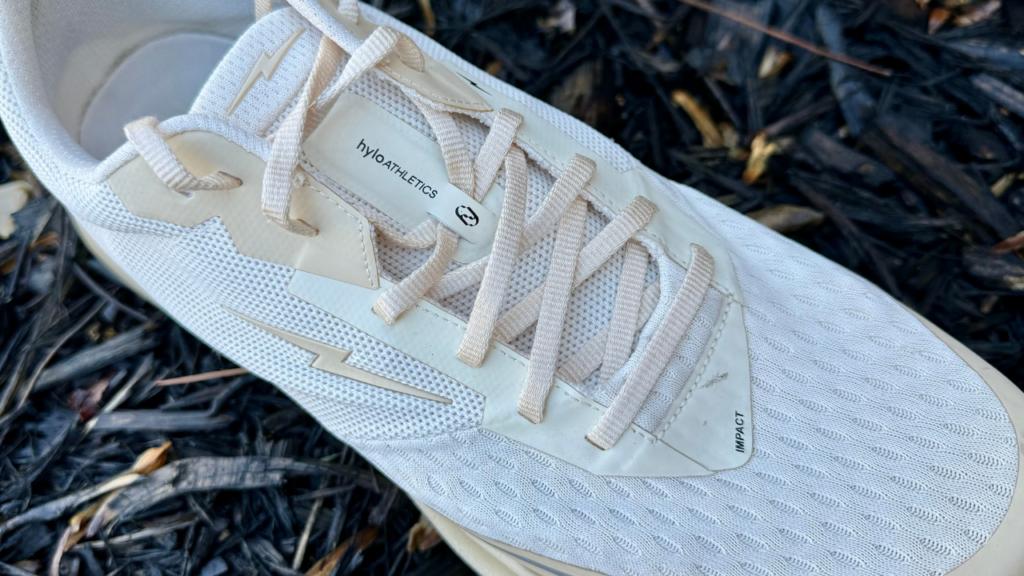
What is the Hylo Impact?
Hylo describes it as:
“Proof that nature can perform. The perfect balance of cushioning and responsiveness for those everyday miles.”
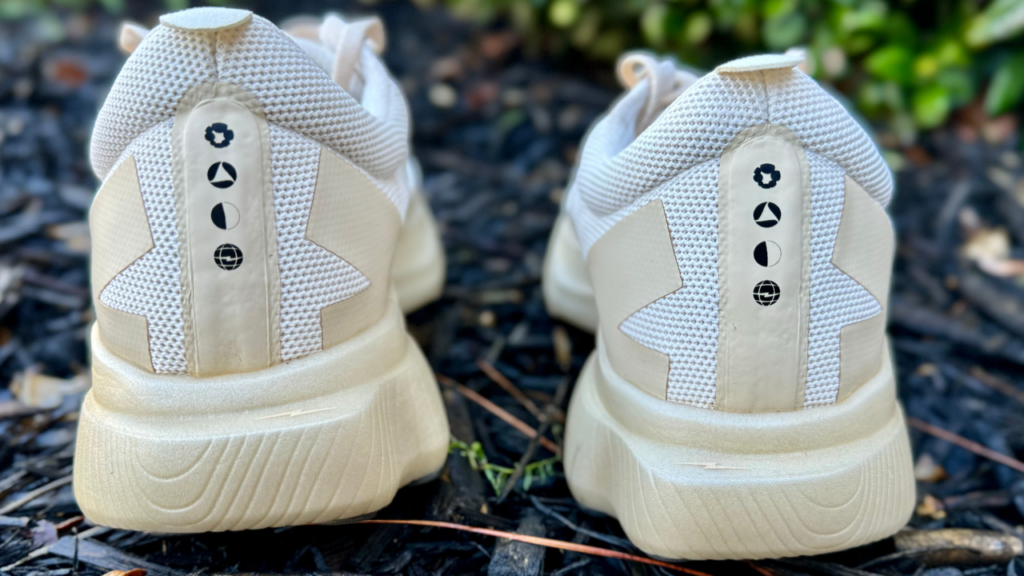
Fit
Arune: While some folks may value the midsole and ride above all our other categories here, nothing is more important to me than Fit because my wider midfoot means it’s not easy to find running shoes that fit well (usually there’s some pinky toe crunch).
This is my first experience with Hylo and I am shocked that this shoe fits so well right out of the box. No awkwardly shoving my foot in, no hoping the upper would stretch and no issue with either too little or too much space for toe splay.
I normally have more to say, but I imagine this is how shoes fit most of you normal foot shaped people and it’s wonderful to just fit into a shoe without cursing.
I went TTS (true to size) with a 9.5, which is my consistent running and training shoe size.
Drew, how was this fit for you? I have a higher volume foot so I love the shape of this, but I’m curious how you reacted to the fit.
Drew: I agree that the Hylo Impact fits true to size and the shape is on point. As Arune pointed out, the shoe widens nicely in the forefoot but fits securely around the midfoot. That kind of fit isn’t always as common as it should be so I appreciate it every time I get it. But let’s not delay the inevitable with more boring fit conversations, let’s get to the cushioning! That’s next isn’t it…Arune?
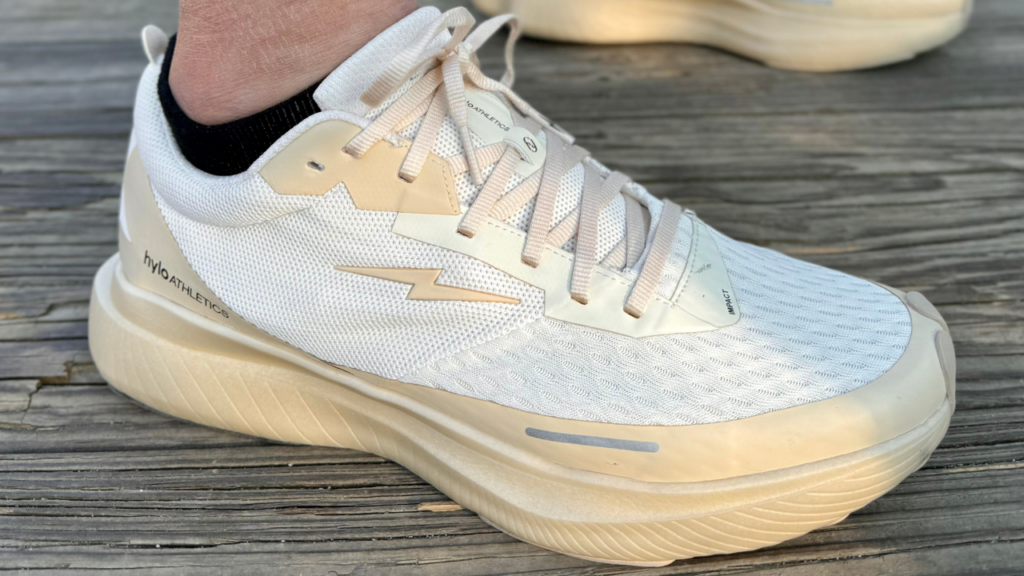
Upper
Arune: Not quite yet because this is where it starts to get really interesting (Editor’s Note: sigh, if you want to skip ahead to the midsole, feel free).
The upper is a “lightweight 100% biobased Rilsan knitted up made from castor beans”, a sentence I’ve never seen before and wouldn’t have anticipated based on how much the upper felt like a premium trainer from Nike or Saucony.
This is also part of the Hyloop technology built into the shoe, promising “more life, less landfill” by offering to recycle these shoes into new shoes when you’re done with your Impact.
I ran up to 8.1 mile runs in this shoe and never had any issues with the upper – no discomfort, no warm spots and no issues with how the upper moved during my runs. Sometimes recycled or environmentally-friendly materials feel noticeably different on foot in either distracting or uncomfortable ways, but Hylo Impact feels like a “normal” running shoe.
Given the environmental concerns, I’m not surprised that the colorway options for the Impact are fairly limited from the jump but I think there’s an option for everyone. I got the black and white version that looks very much like a myriad of basic Hoka or Asics runners, so I think it’s nice that the Hylo Impact doesn’t look out of place next to them.
I know what you’re wondering, Drew – did this pass the Wife Test? Her response was neutral, noting that it was a colorway that would go with everything and that the shoe looked comfy, so I’d call that a win overall.
Drew: The upper is comfy. I don’t mean to sound callous but all the sustainability in the world wouldn’t get me to wear an uncomfortable upper so I love that the upper on Hylo Impact just feels like a normal running shoe…kind of Brooks-ish if you ask me.
But the Hylo Impact’s upper doesn’t get any extra points either. It’s a run of the mill, sort of boring mesh build with fused overlays for protection or containment. I also don’t think it needed all the layers it uses on the upper. A more minimalist upper could have gotten the job done and been even more environmentally friendly. In the end, the upper works well, but it’s nothing noteworthy.
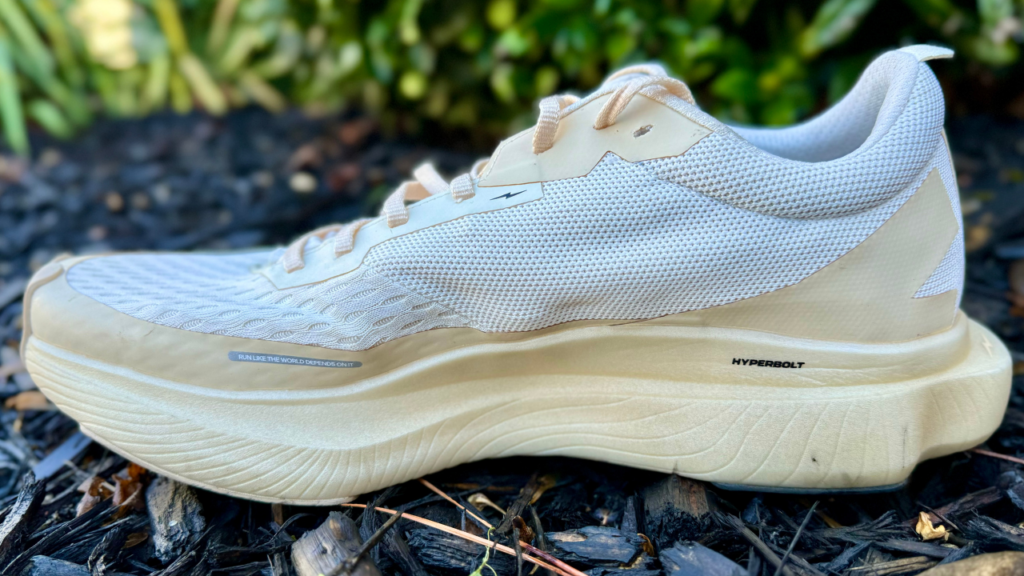
Midsole/Ride
Arune: This is where I’m most surprised by Hylo because I don’t think I’ve ever experienced an eco-friendly midsole like this one.
The Hyperbolt “hyperintelligent” foam is incredibly bouncy – almost to a fault, as we’ll discuss – and is just fun underfoot. Most of these recycled midsoles feel too firm and have, let’s say, varying amounts of energy return. Hylo has managed to sidestep those issues in a way that I’m shocked I haven’t seen from the bigger brands.
Combined with the PureGlide geometry, you get an incredibly smooth ride from the first stride to the last. I am a recovering heel striker who’s been working to roll through my strides with proper toe off and I didn’t have to think about it in this shoe. Your foot just moves like it’s supposed to move and it’s a joy.
But, I had a problem.
I don’t know if it’s my relatively newness as a runner, my weight (220lbs), the Hylo Impact itself, or perhaps some combination of all these things, but I found my feet consistently sore after each run.
At first I thought it was just a necessary breaking in period for the shoes, but the problem persisted, almost like these shoes were so bouncy that my feet were fighting to create any sense of stability.
Drew, what’s your diagnosis?
Drew: The Hylo Impact may be too squishy for its own good. Which is a crazy thing to say about 20% bio-based foam. Hylo’s previous efforts have been FIRM. This is a complete departure from what they’ve released to this point. This supercritical nitrogen-injected bio-EVA mix is bouncy and fun. It’s a remarkable engineering achievement. I really liked it. But I can see Arune’s point.
The midsole is built with a rim to lessen the side to side motion inherent with a midsole this squishy. It’s not enough. Depending on how much side to side movement you have in your stride you may feel like your feet or ankles were doing extra work for the entirety of your run. Or you may be like me and just feel like you got a well-cushioned experience. You’ll have to think how super squishy foams treat your body to know if the Hylo Impact is right for you.
I will say that Hylo created something completely in tune with market trends. This is exactly what many runners want. And to be able to offer sustainability on top of that is a very good value proposition. I would like to see a firmed up version in the future more akin to the supercritical foam found in the Puma Magnify 2, but this is a huge step in the right direction for Hylo.
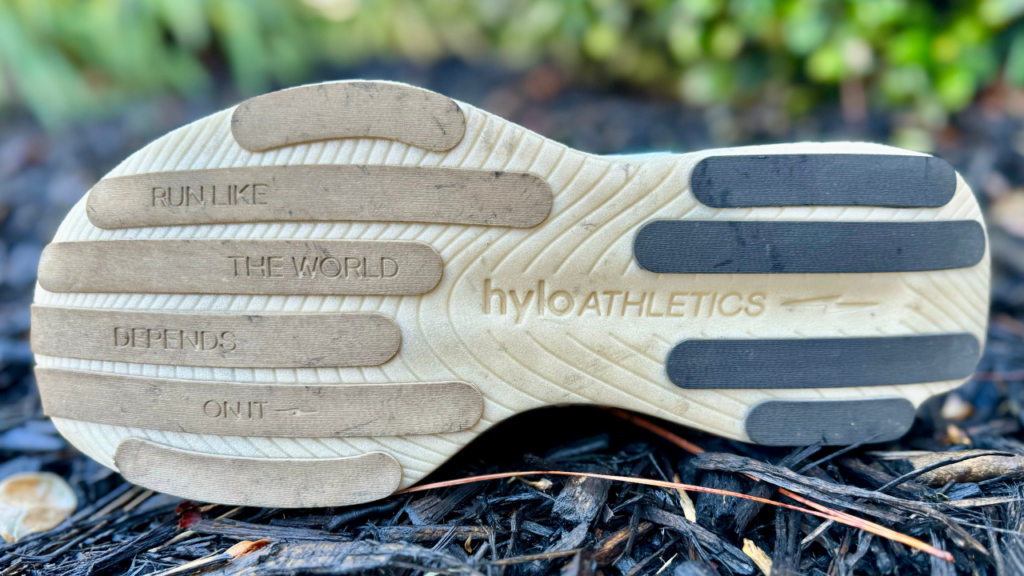
Traction
Arune: I’ve been in Utah with these shoes, which would actually make for interesting traction tests but the combination of these hills and some recent knee issues means I haven’t got any real feedback here.
Drew: The race car tire like traction on the Hylo Impact is aligned in strips and made with 60% natural rubber. It works extremely well in dry conditions but I had more than normal slippage on wet concrete or wet boardwalks. This rubber compound needs some refining to withstand bad conditions but it does well for having not traction pattern whatsoever.
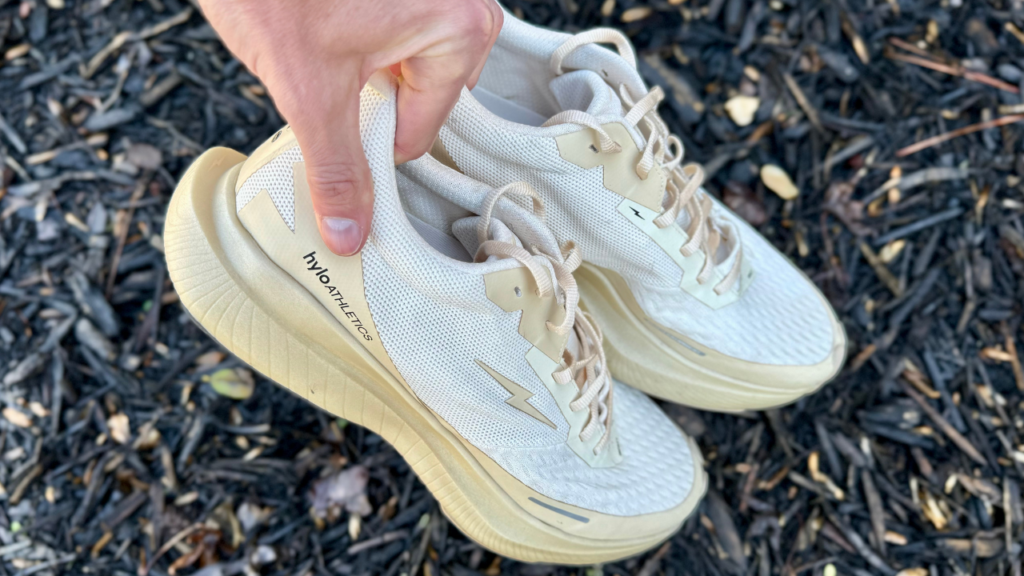
Is the Hylo Impact worth $165?
Arune: While shoe prices – hell, the price of everything – are rising, it’s still possible to get some excellent daily trainers for $140 (Asics Novablast 4) or $150 (Brooks Ghost Max), so the Hylo has put themselves slightly above the high end of those daily trainers (Saucony Triumph 21 at $160).
I know this is a straightforward question, so let me say this – despite my discomfort, I think the Hylo Impact feels as premium as any shoe I listed above even if I prefer the ride and performance of nearly each one I listed.
However, Hylo is delivering a vegan shoe that proves that great performance doesn’t need to be sacrificed in the pursuit of sustainability – and that is worth paying a bit more to support.
That doesn’t mean everyone has the financial privilege to spend that much, but I’d say that Hylo is a company very much worth supporting and that means this is a shoe where I’d pay MSRP without an issue if it worked for me.
Drew: Yes, the Hylo Impact is worth $165. It’s a solid daily trainer at the high end of the daily trainer price band, which I’d put at $130-$170. It’s at the high end because of the sustainable materials used and I think anyone concerned about stability will find it a small price to pay for the ability to support a company committed at its core to protecting the environment.
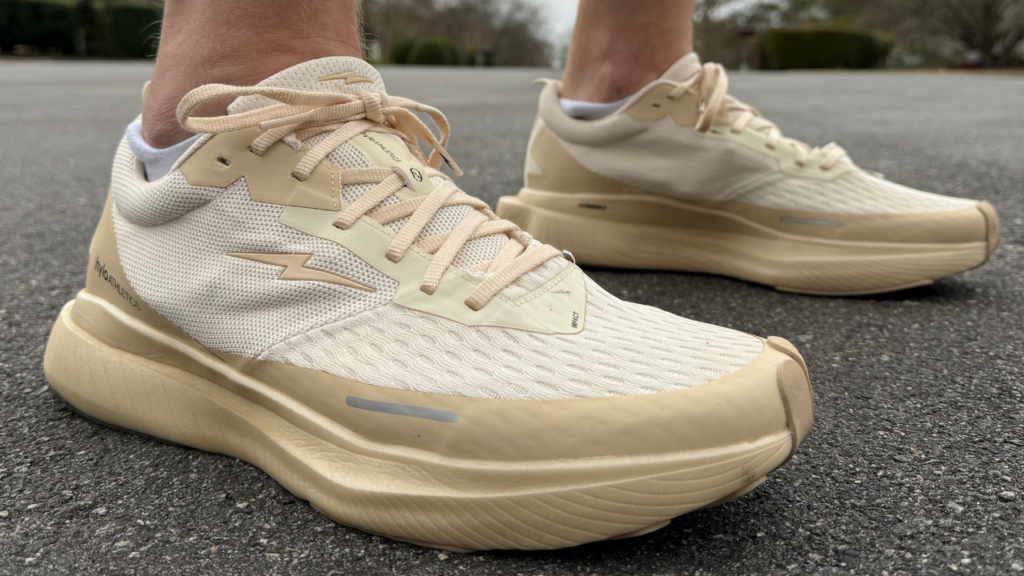
Hylo Impact Summary
Arune: I’ve spoiled it above – the Hylo Impact is a really great daily trainer that even more importantly throws down the gauntlet to every other shoe brand to do better for the planet.
I hope folks give this shoe a shot and I’m really excited to see what else Hylo has planned – it’s exciting when a new brand makes a cool shoe, but it’s even better when they’re doing an objective good for the world.
Drew: If you’re looking for the best running shoe with the most sustainable build, you’ve found it. Right now (March 2024) you can’t do better than the Hylo Impact. It’s got some flaws but it’s a big jump from previous running shoes that attempted to bridge the gap between good running shoe and sustainability.
How do the Authors Run?
Drew Whitcomb (age 42, 6’6″ 195lbs): Runs daily with a once a week rest day. Runs a lot of miles due to testing needs and a growing affinity for long-distance races. Regularly competes in marathons, half-marathons, 10k, and 5k races.
Arune Singh (age 42, 5’11”, 220lbs): Trains daily with functional fitness programming from Deadboys Fitness, founded by Colby “Seth Rollins” Lopez and Josh Gallegos, along with logging 30-40 miles of running per week. He also has a medical history of Sleep Apnea and Myasthenia Gravis, meaning Arune’s focus is on lean muscle mass.
Disclosure
While Hylo sent pairs of the Hylo Impact to facilitate this review, they had no involvement in this review, didn’t receive an advance look at it, and have not attempted to influence it.

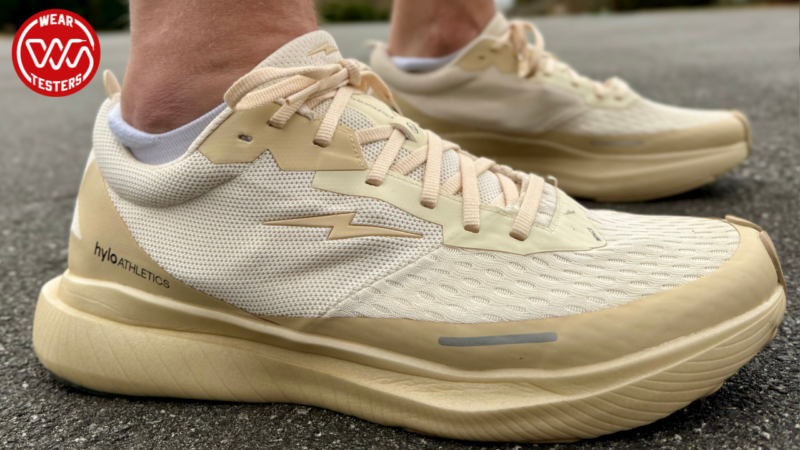
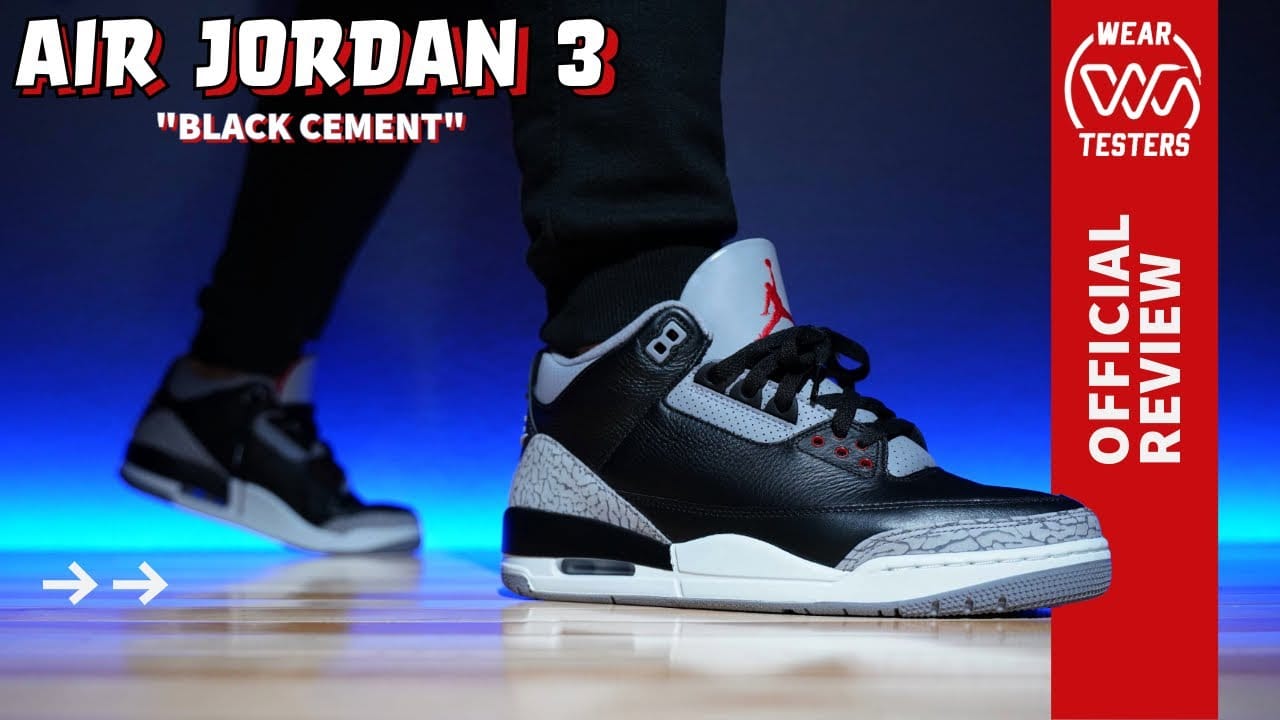
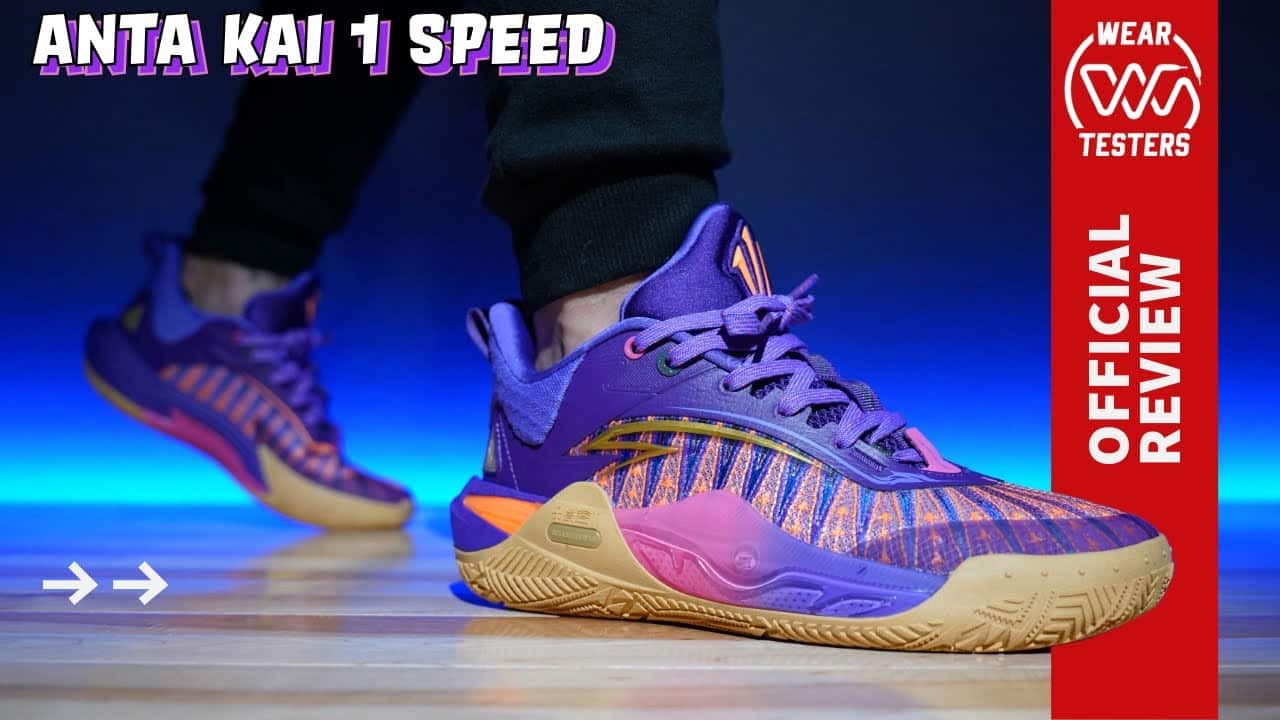
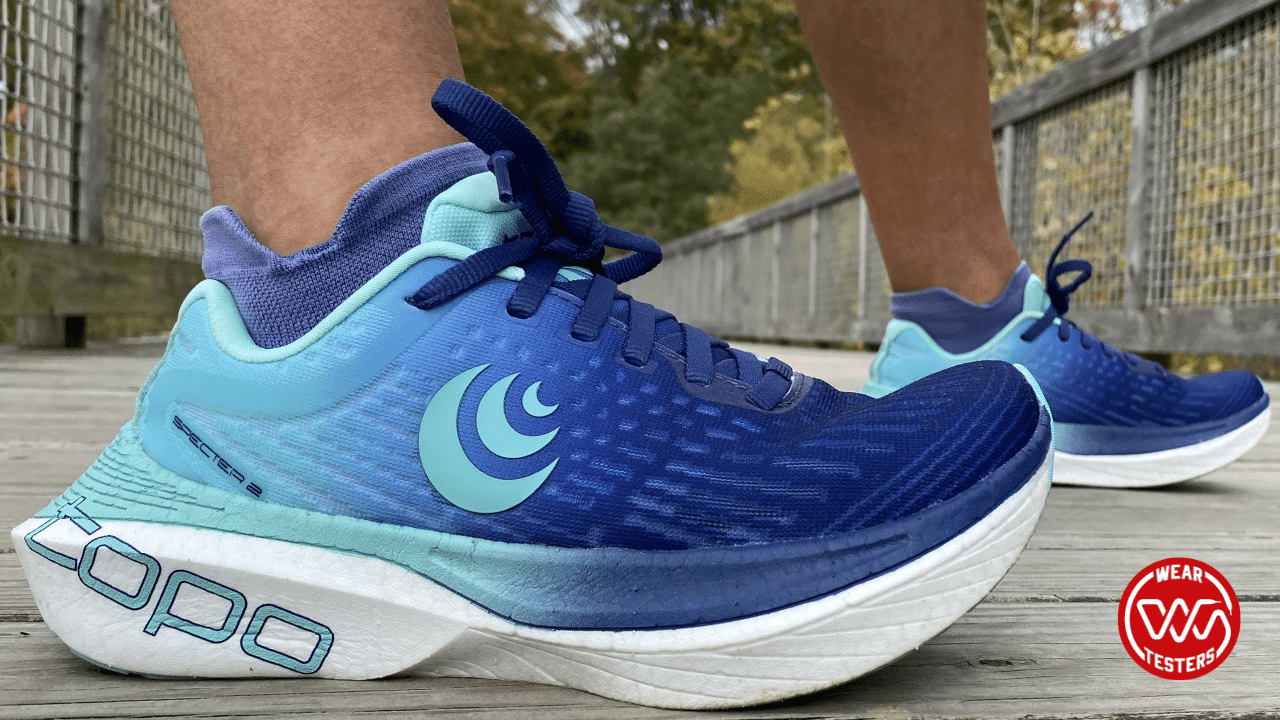
Hey Drew, I’m a 235lb runner looking for a new tempo shoe with bounce, etc. I almost always choose dynamic foams to prevent foot soreness like you mention in this review. What’s a comparable shoe to the Hylo where you didn’t see foot soreness, but had good bounce for your weight?
Read through our reviews on the Hoka Mach 6, New Balance Rebel v4, Brooks Glycerin 21, Puma Magnify Nitro 2, and Asics Novablast 4. One of those should fit your use case nicely.